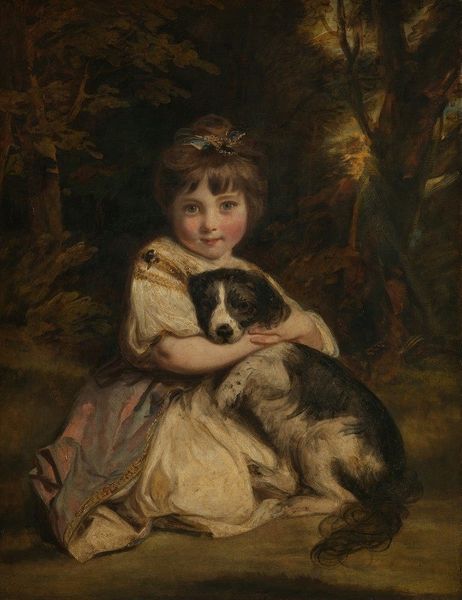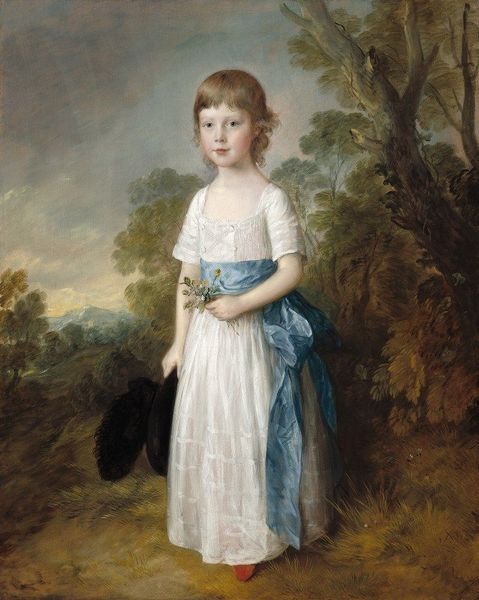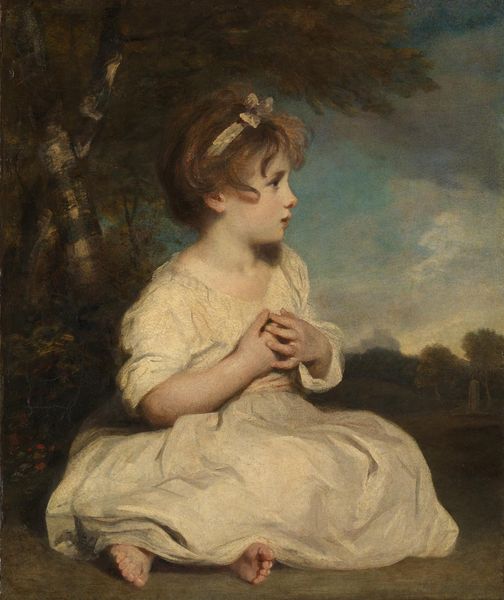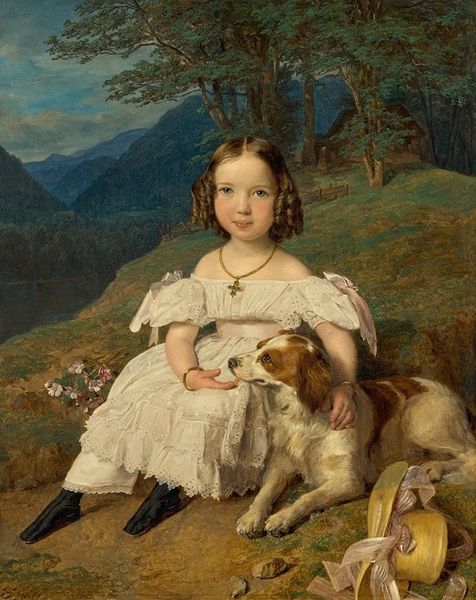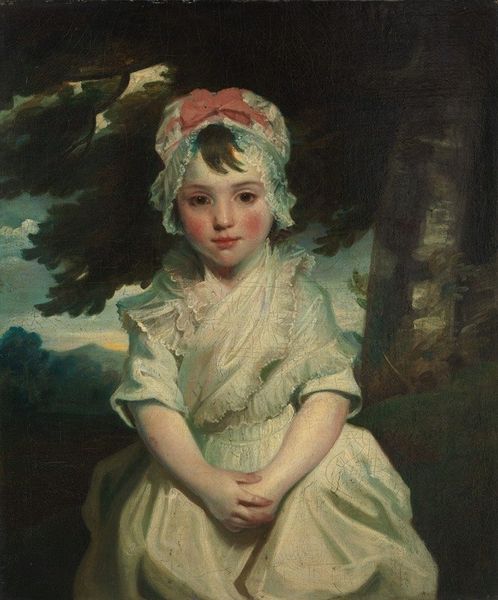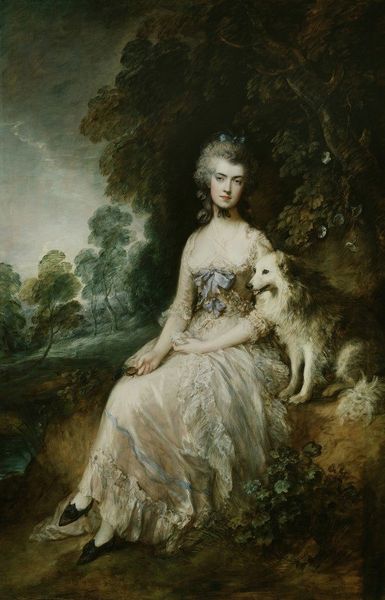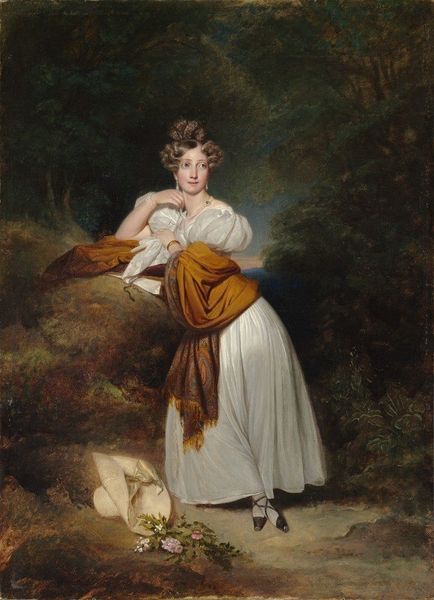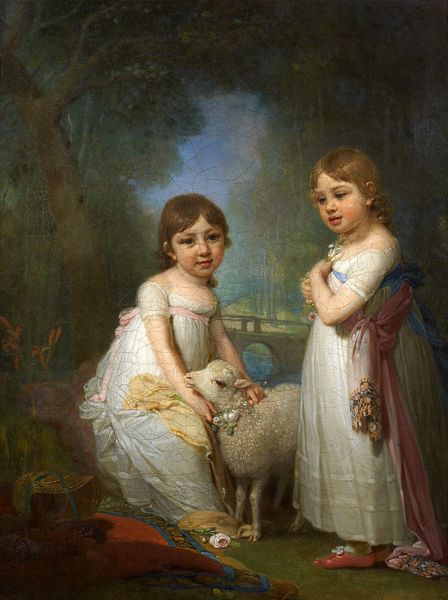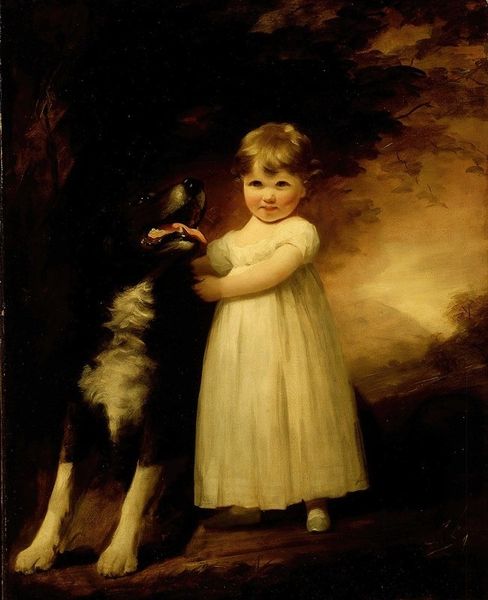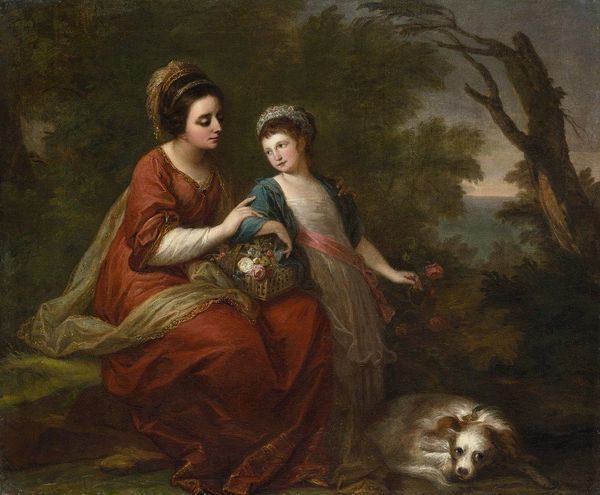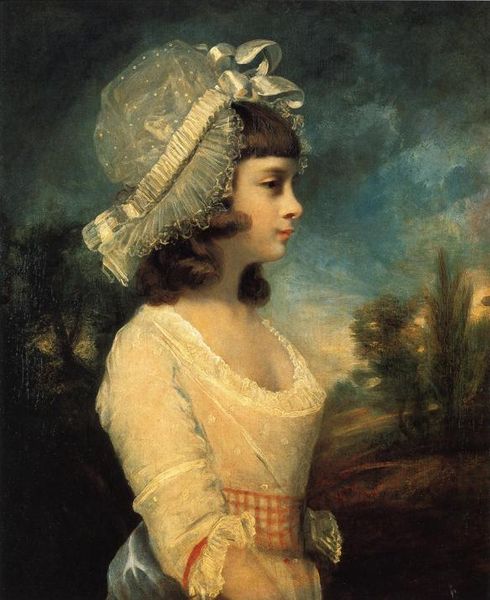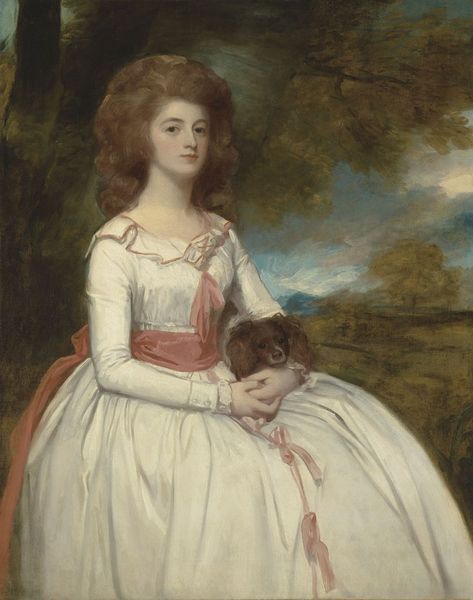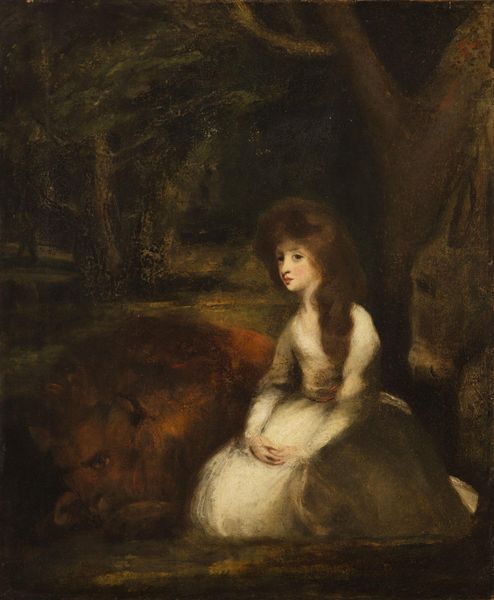
painting, oil-paint
#
portrait
#
painting
#
oil-paint
#
landscape
#
oil painting
#
genre-painting
#
rococo
Copyright: Public Domain: Artvee
Curator: What a charming image. Thomas Gainsborough’s portrait of Isabelle Bell Franks presents a young girl seated serenely within a verdant landscape. It's clearly oil on canvas, showcasing Gainsborough's characteristic loose brushwork. Editor: It strikes me as incredibly saccharine. The fluffy lamb, the pastel tones… it feels consciously constructed for a particular kind of patron, someone desiring an image of innocent, idyllic childhood. Curator: Precisely! We have to consider the societal context. Gainsborough thrived creating portraits for the British aristocracy. Paintings like this bolstered a certain image of themselves and their place within the social hierarchy. The very material—oil paint on canvas—signifies luxury, think about the costs of these commodities and the labor required for its creation! Editor: It also taps into longstanding pastoral traditions in art, doesn’t it? The idealized landscape, the child representing purity and innocence, it all builds upon established conventions within Western art history, linking the family to ideas about nature and order. How did those landscapes surrounding her support ideas of ownership or authority? Curator: Absolutely. Gainsborough’s technique deserves closer examination too. Look at how the textures of her dress almost blend seamlessly with the landscape behind her, creating a unified scene where the artifice is intentionally hidden. Consider too that this unified approach to the rendering of different material items ultimately conceals an army of underpaid labor. Editor: So, a blurring of the lines not only stylistically, but socially as well? This portrait seems a carefully orchestrated statement of belonging and visual harmony that obscures underlying tensions. Was the process and material meant to imply this natural innocence and the lack of intervention? Curator: The artifice serves a distinct purpose: reassurance and visual justification for wealth, status and gendered place in society. The Franks family certainly purchased more than just a likeness; they bought into a carefully curated narrative. Editor: I think you're right. By drawing out these connections, we see how a seemingly straightforward portrait reveals the complex ways that art serves to negotiate social and political identities. Curator: Indeed, considering how these visual strategies connect with power structures transforms our reading. Editor: It enriches our experience to go beyond face value, connecting it to social practices.
Comments
No comments
Be the first to comment and join the conversation on the ultimate creative platform.
